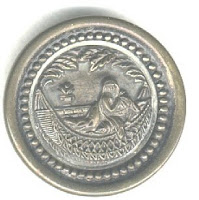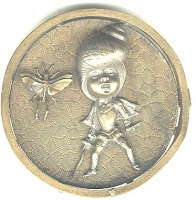Beauty is all around me
as I sit in an easy chair
With my buttons in profusion
piled everywhere.
Some buttons tell a story
of people from long ago;
Of king's, Queens's, operas,
or history
They make a fascinating show.
On some are beautiful flowers,
Some have leaves or a vine,
others have mammals or insects,
I find some of each on mine.
There's glass of every color
with lusters, enamel and gold
to add to their value or beauty.
Some are quite modern, some old.
I find some china buttons,
calicos, and stencils are there.
Bulleyes, piecrusts and hobnails,
of beauty they have their share.
Whatever their age or material
or in what category they fall.
Expensive, or plain little buttons,
They're mine, and I love them all..
by Irma Shoop







